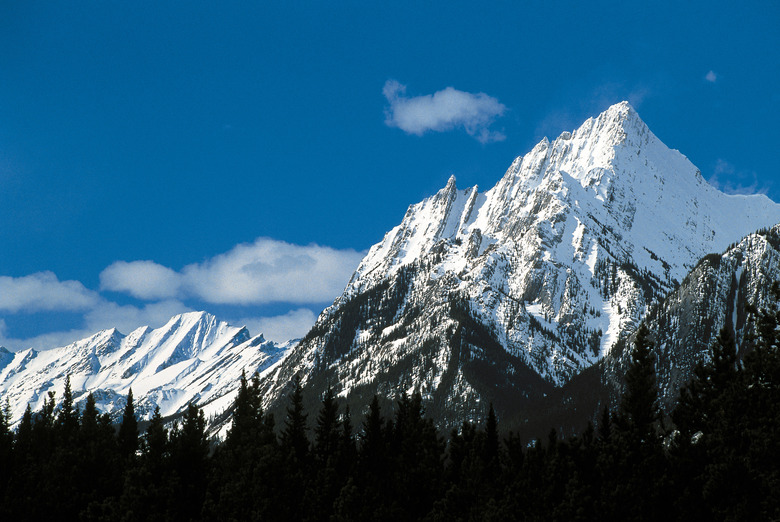Colorado Natural Resources
Federal law defines natural resources as land, fish, wildlife, biota, air, water, groundwater, drinking water supplies, and other such resources. In Colorado, the state acts as a trustee to protect the natural resources it owns. The federal government and Native American tribes are responsible for the natural resources they own within the state. Colorado has abundant mineral resources that include oil, coal, molybdenum, uranium, sand and gravel.
Forests and Land
Forests and Land
Colorado's area is 104,094 square miles, of which 496 square miles are inland water. Colorado's land ranges from plateaus and plains to the steep slopes of the Rocky Mountains, along with many canyons and foothills.The state has 24.4 million acres of forested land that host many species of wildlife. The forests filter pollutants from the air and water, thereby improving the quality of both. The principal trees found in Colorado are fir, pine, aspen and juniper.
Energy Resources
Energy Resources
Estimates put Colorado's oil reserves at approximately one trillion barrels. Shale formations, such as the Niobrara and Green River, are the largest known shale oil deposits in the world. Colorado produces more than 5 percent of the nation's natural gas. About 40 percent of this gas is coalbed methane, accounting for 30 percent of the national supply. Colorado's western basins have surface and underground coal mines. In 2012, the state mined 29.5 million tons of coal. The National Renewable Energy Laboratory estimated in 2009 that the state potentially could produce up to 387,220 megawatts of wind energy.
Minerals
Minerals
The state boasts one of the largest molybdenum deposits in the world. Large mines operate in the Colorado towns of Henderson and Climax. In 2012, the Henderson mine milled 20,800 metric tons of molybdenum ore per day. Colorado also produces significant supplies of gold, silver, sodium bicarbonate, titanium, vanadium, gypsum and marble. The state has 33 uranium mines, but many are inactive and must contend with environmental objections. For example, the defunct Schwartzwalder uranium mine is still cleaning up a creek it contaminated. Colorado saw major uranium ore production cease in 2009.
Fish and Wildlife
Fish and Wildlife
Colorado anglers can find 35 different species of warm- and cold-water fish living in the state's 6,000 miles of streams and the more than 2,000 lakes and reservoirs. Large trout inhabit the state's 168 miles of "Gold Medal" streams. Colorado has 42 state parks and 300 state wildlife areas. The state is host to dozens of species of mammals and birds, many of them appealing to hunters. A dozen mammal species living in the state are endangered, including the gray wolf, kit fox, black-tailed prairie dog and pocket gopher.
Cite This Article
MLA
Finance, Eric Bank, MBA, MS. "Colorado Natural Resources" sciencing.com, https://www.sciencing.com/colorado-natural-resources-7056/. 13 March 2018.
APA
Finance, Eric Bank, MBA, MS. (2018, March 13). Colorado Natural Resources. sciencing.com. Retrieved from https://www.sciencing.com/colorado-natural-resources-7056/
Chicago
Finance, Eric Bank, MBA, MS. Colorado Natural Resources last modified March 24, 2022. https://www.sciencing.com/colorado-natural-resources-7056/
